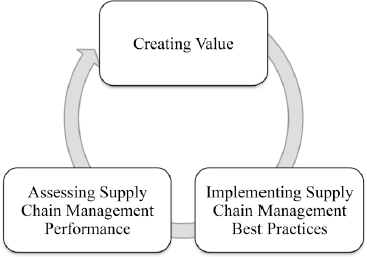2
Value Creation and Supply Chain Performance
2.1. Introduction
In this chapter, we will suggest a framework for global measurement of supply chain performance, based on the identification of the attributes for value creation and the identification of the associated performance indicators. The comparison of performance with other companies makes it possible to position the company on a level of maturity and in this way to clarify what the best practices to put in place are (Figure 2.1).
Figure 2.1. Performance and value creation

This framework is based on a study of 88 companies which represent the following sectors: automobile, textile/clothing, electronics, agri-food and pharmaceutical.
The aim is to:
The analysis will also make it possible to identify potential correlations between the attributes; in other words: does performance on a few attributes result in performance for other attributes? The position of the company on the levels of maturity, which is decided through measurement of performance for the attributes, defines the supply chain best ...
Get Supply Chain Performance and Evaluation Models now with the O’Reilly learning platform.
O’Reilly members experience books, live events, courses curated by job role, and more from O’Reilly and nearly 200 top publishers.

